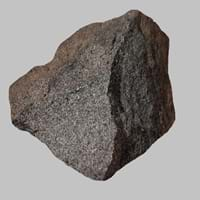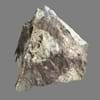Definition
Mylonite is a metamorphic rock formed by ductile deformation during intense shearing encountered during folding and faulting, a process termed cataclastic or dynamic metamorphism
Teschenite is coarse- to fine-grained, dark-coloured intrusive igneous rock that usually occurs in sills, dikes and irregular masses and is always altered to some extent
Origin
New Zealand
Scotland
Discoverer
Unknown
Unknown
Etymology
From Greek mulōn mill + -ite
From its occurrence near Teschen. now known as Cieszyn, Pol., Scotland
Class
Metamorphic Rocks
Igneous Rocks
Sub-Class
Durable Rock, Medium Hardness Rock
Durable Rock, Hard Rock
Group
Not Applicable
Plutonic
Other Categories
Fine Grained Rock, Opaque Rock
Coarse Grained Rock, Opaque Rock
Texture
Foliated
Phaneritic
Color
Black to Grey
Dark Grey to Black
Durability
Durable
Durable
Scratch Resistant
Yes
Yes
Appearance
Dull, Banded and Foilated
Veined and Shiny
Interior Uses
Decorative Aggregates, Interior Decoration
Countertops, Decorative Aggregates, Entryways, Homes, Interior Decoration
Exterior Uses
As Building Stone, As Facing Stone, Paving Stone, Garden Decoration
As Building Stone, As Facing Stone, Paving Stone, Garden Decoration, Office Buildings
Other Architectural Uses
Curbing
Curbing
Construction Industry
for Road Aggregate, Landscaping, Roadstone
As Dimension Stone, Building houses or walls, Cement Manufacture, Construction Aggregate, for Road Aggregate
Medical Industry
Not Yet Used
Not Yet Used
Antiquity Uses
Artifacts, Monuments
Artifacts, Sculpture
Commercial Uses
Creating Artwork, Gemstone, Jewelry
Cemetery Markers, Commemorative Tablets, Creating Artwork, Laboratory bench tops, Jewelry, Sea Defence, Tombstones
Types
Blastomylonites, Ultramylonites and Phyllonites
Not Available
Features
Surfaces are often shiny
Smooth to touch
Archaeological Significance
Famous Monuments
Data Not Available
Data Not Available
Famous Sculptures
Data Not Available
Data Not Available
Pictographs
Used
Not Used
Petroglyphs
Used
Not Used
Formation
Mylonites are ductilely deformed rocks formed by the accumulation of large shear strain, in ductile fault zones.
Teschenite is a fine-grained, hard rock which is a type of metasomatite, essentially altered basalt. It forms with or without crystallization, either below the surface as intrusive rocks or on the surface as extrusive rocks.
Mineral Content
Porphyroblasts
Augite, Olivine, Plagioclase, Pyroxene
Compound Content
Aluminium Oxide, Calcium Sulfate, Chromium(III) Oxide, Iron(III) Oxide, Magnesium Carbonate, Silicon Dioxide
Aluminium Oxide, CaO, Chromium(III) Oxide, Iron(III) Oxide, Potassium Oxide, MgO, Sodium Oxide, Silicon Dioxide, Sulfur Trioxide
Types of Metamorphism
Not Applicable
Burial Metamorphism, Cataclastic Metamorphism, Contact Metamorphism, Hydrothermal Metamorphism, Impact Metamorphism, Regional Metamorphism
Types of Weathering
Biological Weathering, Chemical Weathering, Mechanical Weathering
Biological Weathering, Chemical Weathering, Mechanical Weathering
Types of Erosion
Chemical Erosion, Sea Erosion, Wind Erosion
Chemical Erosion, Coastal Erosion, Glacier Erosion, Sea Erosion, Water Erosion, Wind Erosion
Grain Size
Fine Grained
Coarse Grained
Fracture
Conchoidal
Conchoidal
Porosity
Highly Porous
Highly Porous
Luster
Shiny
Not Available
Cleavage
Conchoidal
Not Available
Toughness
Not Available
1.6
Specific Gravity
2.97-3.05
2.86-2.87
Transparency
Opaque
Opaque
Density
2.6-4.8 g/cm3
2.7-3.3 g/cm3
Specific Heat Capacity
Not Available
Resistance
Heat Resistant, Impact Resistant, Pressure Resistant
Impact Resistant, Pressure Resistant, Wear Resistant
Deposits in Eastern Continents
Asia
China, India, Indonesia, Saudi Arabia, South Korea
India, Russia
Africa
Eritrea, Ethiopia, Ghana, South Africa, Western Africa
South Africa
Europe
England, Finland, France, Germany, Great Britain, Greece, United Kingdom
Germany, Greece, Italy, Scotland, Turkey
Others
Not Yet Found
Greenland
Deposits in Western Continents
North America
USA
Canada, USA
South America
Not Yet Found
Brazil, Colombia, Venezuela
Deposits in Oceania Continent
Australia
Central Australia, Western Australia
New Zealand, Queensland
Mylonite vs Teschenite Characteristics
Though some rocks look identical, they have certain characteristics which distinguish them from others. Characteristics of rocks include texture, appearance, color, fracture, streak, hardness etc. Mylonite vs Teschenite characteristics assist us to distinguish and recognize rocks. Also you can check about Properties of Mylonite and Properties of Teschenite. Learn more about Mylonite vs Teschenite in the next section. The interior uses of Mylonite include Decorative aggregates and Interior decoration whereas the interior uses of Teschenite include Countertops, Decorative aggregates, Entryways, Homes and Interior decoration. Due to some exceptional properties of Mylonite and Teschenite, they have various applications in construction industry. The uses of Mylonite in construction industry include For road aggregate, Landscaping, Roadstone and that of Teschenite include As dimension stone, Building houses or walls, Cement manufacture, Construction aggregate, For road aggregate.
More about Mylonite and Teschenite
Here you can know more about Mylonite and Teschenite. The life cycle of a rock consists of formation of rock, composition of rock and transformation of rock. The composition of Mylonite and Teschenite consists of mineral content and compound content. The mineral content of Mylonite includes Porphyroblasts and mineral content of Teschenite includes Augite, Olivine, Plagioclase, Pyroxene. You can also check out the list of all Metamorphic Rocks. When we have to compare Mylonite vs Teschenite, the texture, color and appearance plays an important role in determining the type of rock. Mylonite is available in black to grey colors whereas, Teschenite is available in dark grey to black colors. Appearance of Mylonite is Dull, Banded and Foilated and that of Teschenite is Veined and Shiny. Properties of rock is another aspect for Mylonite vs Teschenite. The hardness of Mylonite is 3-4 and that of Teschenite is 7. The types of Mylonite are Blastomylonites, Ultramylonites and Phyllonites whereas types of Teschenite are Not Available. Streak of rock is the color of powder produced when it is dragged across an unweathered surface. The streak of Mylonite is white while that of Teschenite is black. The specific heat capacity of Mylonite is 1.50 kJ/Kg K and that of Teschenite is Not Available. Depending on the properties like hardness, toughness, specific heat capacity, porosity etc., rocks are resistant to heat, wear, impact, etc.Mylonite is heat resistant, impact resistant, pressure resistant whereas Teschenite is impact resistant, pressure resistant, wear resistant.





